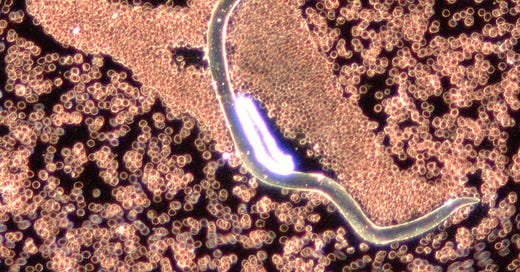A little review will be helpful, but first it might be useful to share some of what I try to instill in my medical astrology students. The ultimate goal is to hold a blueprint of perfection. In the beginning, making the diagnosis may take a lot of time, but it is important to avoid becoming entangled in what is wrong because this will have a tendency to intensity the negativity. We need to identify the problems, but not to dwell on them. If we are successful, the process will be smooth, comfortable, and permanent.
What we have thus far seen is that Dr. Albert Abrams began with one-on-one interaction with his patients. He percussed the abdomen and noted that each health condition responded uniquely. At some point, medical students sometimes acted as proxies for the patients. They were “wired” to vials containing various pathogens, and they had some kind of connection to the patient . . . one that became increasingly remote as time went on. Eventually, both diagnosis and treatment tended to be remote rather than in person.
While not everyone may agree, it seems important to establish this point because frequency devices have become very popular; but I want to make a distinction between what happens because of electromagnetic frequencies and what responds to thought or intention or perhaps to petitions and prayers.
So, what I am going to do now is tell a few stories that I hope are both interesting and informative.
After the publication of my book on botanical cancer treatments, I was invited to consult at clinics all over the world. Just as with my earlier work, patients wanted to tell their stories, and I was very interested in what they had to say. Hulda Clark’s books were best sellers and many people had tried her protocol, including the use of the zapper. I was able to study the blood using darkfield microscopy, and what I saw with the zapper was that the parasites were all shriveled up and were drifting around in the plasma, but there were no phagocytes, bacteria, or fermentation processes observable.
To make this clear, the way that herbal protocols work is that dead parasites will normally be eaten by bacteria. This process tends to take about six days. During this time, white blood cells tend to keep their distance. In short, the bacteria are doing exactly what bacteria are supposed to do. They are consuming dead organic substances. While the bacteria are busy, most patients feel a little achy, like they might be coming down with the flu, but they very seldom feel bad enough to stay in bed. When the bacteria are finished, the white blood cells collect the bacteria; and the patient feels fine.
If the patient takes antibiotics, the bacteria are paralyzed and the parasite decomposes through a process of fermentation. This is a lot messier — and, in my opinion, undesirable. Over and above antibiotics, there are several additional reasons for the lack of bacteria, including toxic metals and chemical imbalances.
Image taken in Switzerland in 2005 using a Nikon Eclipse E600 microscope with Sony DXC-S500 camera. In this particular instance, the erythrocytes immobilized the parasite so that a single white blood cell would attack the parasite. The red blood cells opened corridors so that the white blood cell could spray a mist on the parasite that caused the membrane to blister. After attacking in 4-5 places, the parasite died and bacteria finished the job. It goes without saying that what can happen on a slide may not be exactly the same as what occurs inside a blood vessel.
As fate would have it, I attended a conference where there were many different frequency devices on display. I knew some of the doctors at the conference, several of whom asked me to look at their blood. They were curious, of course. I had access to a very good microscope so instead of viewing at 1000x, I was very close to 4000x, nothing compared to Rife, but well beyond most out of the box biological scopes. At this magnification, I could see electroperforations in both red blood cells and parasites. The white blood cells were not particularly viable. My hypothesis was therefore that with dozens of vendors demonstrating their devices, those of us who had milled around in the trade show had been exposed to a serious overdose of whatever frequencies had been broadcasted.
Curiosity took over big time. Along with some of my students, we conducted a number of experiments with cell phones; and when consulting in clinics in Europe, we assessed all the patients before and after exposure to radioactive diagnostic procedures.
At the time, most people were still using 2G phones. The clinic had a satellite dish on the roof, but my office was at the other end of the building. In reality, no perforations attributable to Wi-Fi towers were observed until the advent of 4G. However, cell phone use did impact the behavior of the red blood cells. The erythrocytes would cluster together to form a barrier to protect other cells. The strategy was comparable to what penguins in Antarctica do when the blistering winds are fierce. The male penguins take turns standing on the periphery to protect those in the center.
As for the radiologic procedures, they will be addressed in the next post. Then, there will be several posts for paid subscribers only.
Copyright by Dr. Ingrid Naiman 2023 || All Rights Reserved




